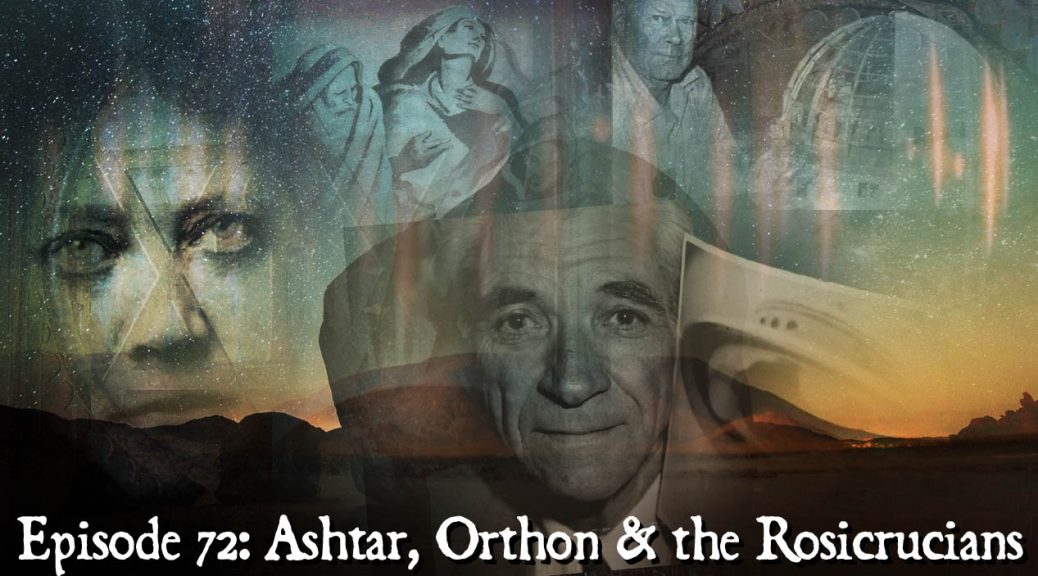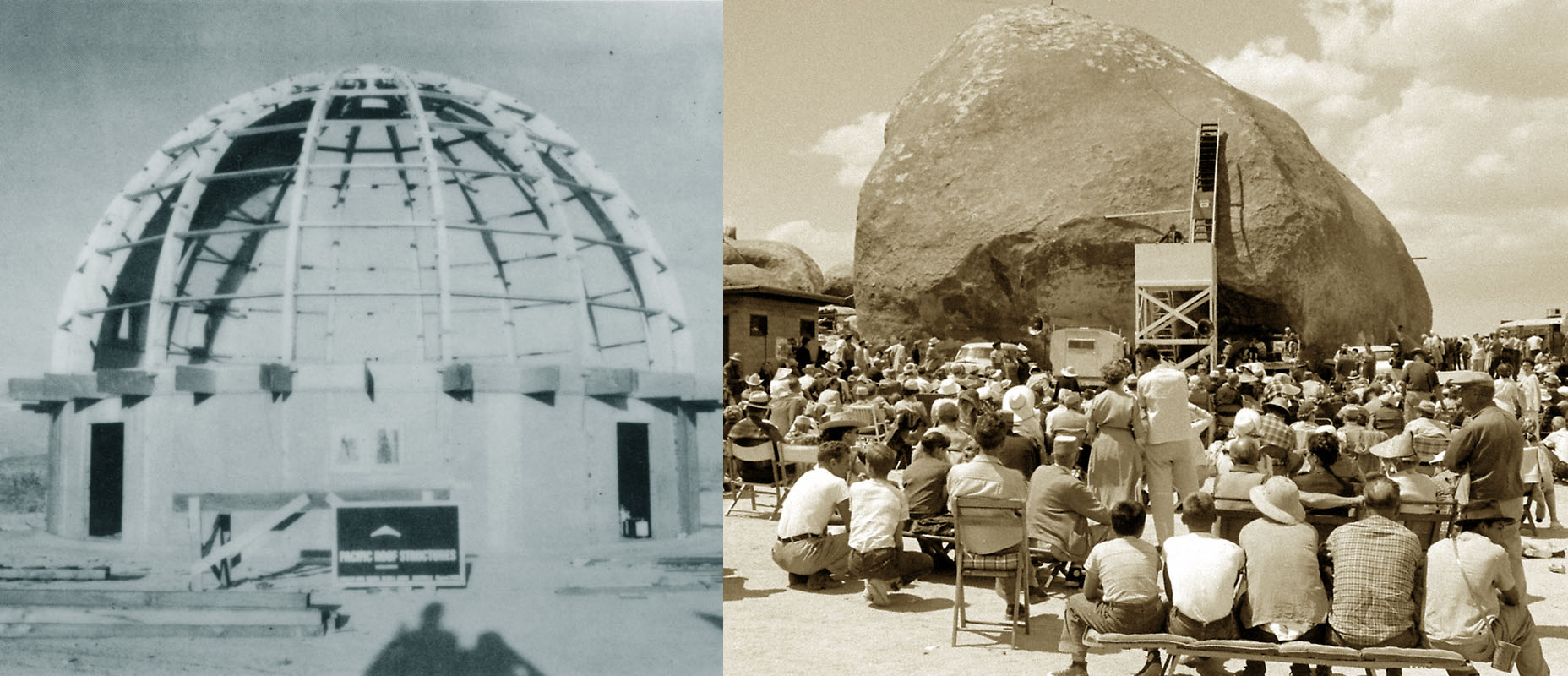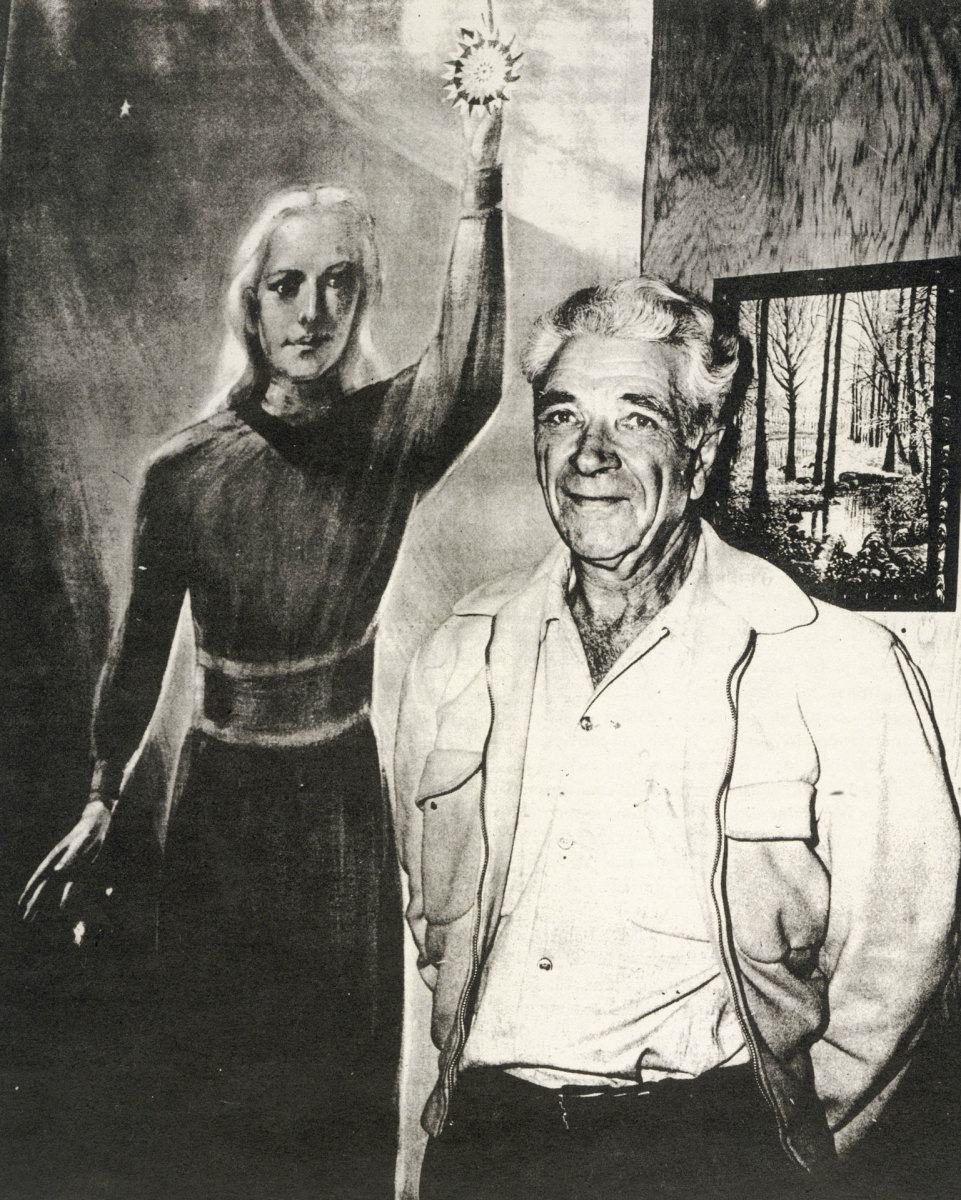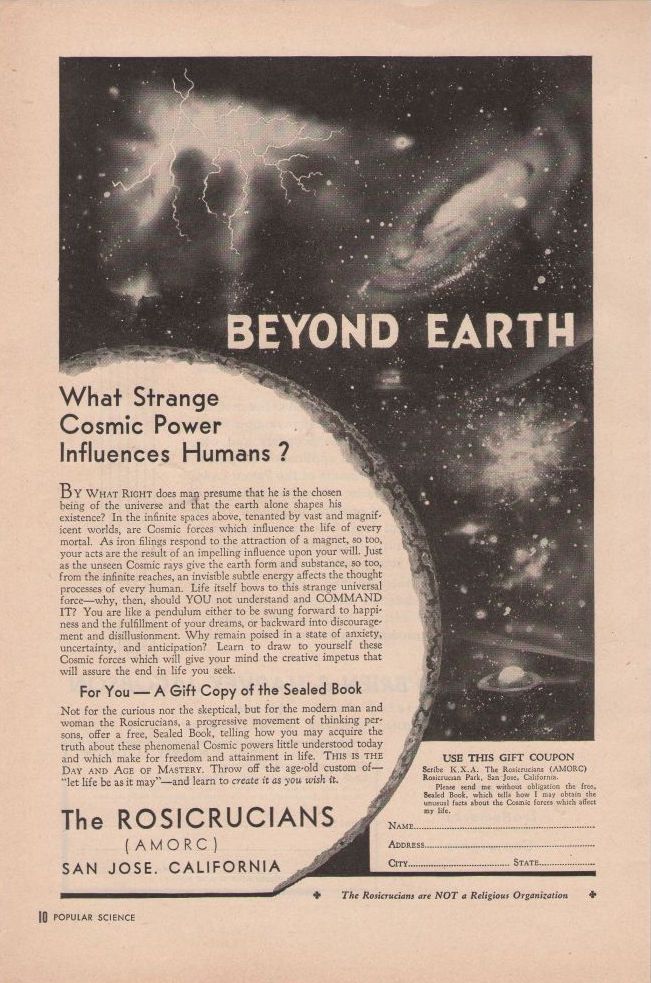
Ashtar, Orthon, and the Rosicrucians
Podcast: Play in new window | Download (Duration: 47:06 — 53.9MB)
Subscribe: Apple Podcasts | Spotify | Android | Podchaser | RSS | More
Messages delivered by the extraterrestrials Ashtar and Orthon to Contactees of the 1950s represented a sort of repackaging of 19th-century Theosophy, a philosophical descendent of the Rosicrucianism of the 1700s.
After our previous epiosde examining George King of the Aetherius Society, this episode looks at two other Georges of the Contactee movement, George van Tassel (channeler of Ashtar) and George Adamski (allegedly visited by Orthon).
We begin with a look at George van Tassel’s pre-Contactee life in Southern California during which he worked in aviation, a path that led to him taking ownership of a tiny airstrip in the nearby desert, Giant Rock Airport, named for the landmark boulder beside it.
We hear about van Tassel’s early involvement in a metaphysical group, The Brotherhood of the Cosmic Christ, and his progression into channeling messages from Space People. By 1953, he claimed to have encountered a Venusian by the name of Solganda, who welcomed him into his space craft. We hear some amusing details revealed in interviews with the Contactee-friendly radio host Long John Nebel. (Nebel’s late-night show, Partyline, out of New York anticipated paranormal shows like Art Bell’s Coast to Coast and are well worth checking out.)
Chief among the Space People van Tassel claimed to contact was Ashtar, whose messages were largely devoted to warnings about humanity’s ill-fated dabbling with nuclear weapons. Strangely, messages from Ashtar began to be received by other channelers even in van Tassel’s day, and he continues to be channeled in New Age circles to this day.

We also hear about the Giant Rock Spacecraft conventions van Tassel hosted from 1953 to 1977, and about the Integratron, a domed construction van Tassel claimed would function as a sort of time machine or rejuvenator of the human body. Unsurprisingly, the plans for the latter were provided by the Space People.
We next look at the first Contactee to supposedly meet a being from space, George Adamski. His connection to Theosophy is particularly obvious and is illustrated through newspaper excerpts read by Mrs. Karswell, in which Adamski represents himself as an esoteric teacher from Tibet or Egypt (take your pick).
While continuing to publish metaphysical pamphlets in the late ’40s, Adamski was becoming more obsessed with space, including both astronomy and astral experiences of a more cosmic nature. He relocated to a camp owned by one of his students at the base of Mount Palomar, where he set up a telescope and was sometimes mistaken by visitors to the famous observatory on Palomar’s peak as a professional associate of the astronomers (something he actively encouraged).
After producing, the first of his UFO photos in 1947, and 1950, Adamski arranged a saucer scouting expedition with friends and students, during which he claimed to have met Orthon. We hear Adamski himself describe this meeting to Long John Nebel and about some curious clues and photographs left in Orthon’s wake — including the much debated bell-shaped flying saucer photos published in his 1953 book, The Flying Saucers Have Landed.

Even at the height of his fame, rumors swirled within the flying saucer community that Adamski was a fraud, but alongside this are slightly mitigating reports by acquaintances that he occasionally confessed as much, while pleading that it was all in support of redemptive spiritual truths.
Oddly, perhaps — this brings us to the Rosicrucians, a movement influential upon Theosophy, and one founded upon a sort of hoax, more or less confessed to by its founder, the German Lutheran theologian Johann Valentin Andreae.
It’s believed that Andreae was behind at least the first publications mentioning Rosicrucianism, a series of anonymous pamphlets that appeared in Germany between 1614 and 1617. In these, it was implied that a hitherto unknown body of knowledge, an amalgam of alchemy, hermeticism, Christian mysticism and Kabbalah had been gathered by the brothers of the Rosy Cross, themselves followers of a 14th century seeker named Christian Rosenkreuz, (German for “Rose Cross”). Many Enlightenment-era scholars inspired by Rosicrucian ideals and not privy to the hoax went on to dedicate well intentioned projects dedicated to Rosicrucian ideals — all similar to Adamski’s notion of good teachings brought by imposters.
The similarity between the notion of hidden Rosicrucian adapts and the Masters of Theosophy did not go unnoticed by the movement’s leading light, Helena Blavatsky. In writing about the 1842 novel Zanoni by Edward Bulwer-Lytton, she described the characterization of the Rosicrucian hero Zanoni as a perfect description of Theosophy’s hidden Masters of her.
Stranger still, it’s believed that Blavatsky’s notions of a sort of “higher science,” a technology that manipulates subtle spiritual energies, seems to have been directly influenced by Bulwer-Lytton’s 1871 novel, The Coming Race and its concept of the “vril,” used by hidden survivors of a an advanced civilization comparable to Blavatsky’s Atlanteans. A comparison to the mysterious powers channeled by van Tassel’s Integratron is naturally mentioned here.
We wrap up with a look at A.M.O.R.C. (The Ancient Mystical Order Rosae Crucis) a uniquely American Rosicrucian organization known for its flamboyant advertisements for cosmic know-how published in the backs of magazines of the 1940s and 50s. Founded in 1915, this group of media-savvy adepts also went on to produce some particularly peculiar records in the 1960s, which we hear sampled at the closing of the show.
